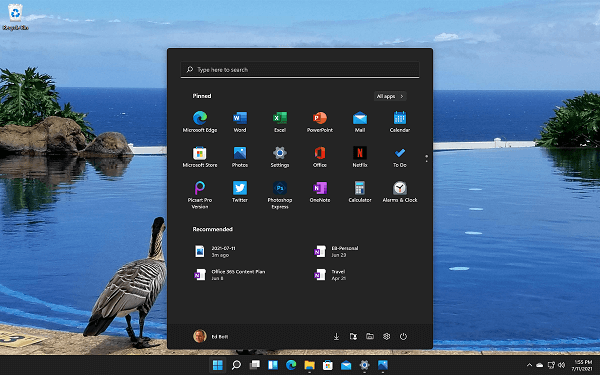Most blogs have been talking about Windows 11 these past few days. This is the most significant since the first popular introduction to Microsoft’s GUI operating system.
Much has changed in the world since its launch in 1995. The same applies to Microsoft, the first major version of Windows was developed and launched under Satya Nadella.
Windows 11 marks a major shift in focus from previous major releases. This almost guarantees that the mistakes of Windows Vista and Windows 8 will not repeat themselves, at least in the current leadership.
It also shows the way to the next version of Windows (called Windows 12). This is another cornerstone. So, let’s start this guide about Windows 11 The Beginning of a New PC Age.
Why doesn’t Windows 11 suck?

We had many versions of Windows in the first decade of this century. Starting with Windows 2000 and the devastating Windows Millennium, through Windows XP, Windows Vista train crash, to Windows 7. In late 2012, Windows 8 hit the market. Then, in 2015, shortly after Satya Nadella took over, Windows 10 raced to the ground. Skip Windows 9
Windows 11, the first operating system developed entirely under Satya Nadella, faces this story. I mean, Windows XP was good, Windows Vista was bad, Windows 7 was good, Windows 8 was really very bad, and Windows 10 was good.
The problem with all these bad versions was that each one was trying to fulfill some crazy esoteric ideal, while the following versions focus too much on what the bugs are fixing in the previous version.
So, the recurring problem was a poor thinking strategy to break the operating system, after which, a strictly focused strategy for fixing the malfunction was developed. Solid products were solid because their goals were clearly stated. Broken products failed because their purpose was misinterpreted.
Windows 11 is supposed to be a product of stereotypes, but it’s not. Why not? Under Satya Nadella, Microsoft has a strong focus on focusing on and improving customer needs and experiences.
In a way, it puts Windows 11 in the same implementation area as Windows XP, Windows 7, and Windows 10. It focused on fixing issues. In this case, the things that bother the users and usually update the critical parts of the operating system. These key components are security and the user interface (UI).
What are the minimum system requirements for Windows 11?
- Processor: 1 GHz or faster with two or more cores on a compatible 64-bit processor or system on a chip (SoC)
- RAM: at least 4 GB
- Storage: at least 64 GB of available storage
- Security: TPM version 2.0, UEFI firmware, Secure Boot capable
- Graphics card: Compatible with DirectX 12 or later, with a WDDM 2.0 driver
- Display: High definition (720p) display, 9″ or greater monitor, 8 bits per color channel
When will Windows 11 be released to the public?
Microsoft says the official release of Windows 11 (what the company calls General Availability, or GA) will be available to the public beginning October 5, 2021. It will arrive on new hardware beginning in late 2021.
The complete process of updating Windows 10 PCs that meet Microsoft’s hardware requirements will extend into 2022, Microsoft says.
Hence, this wraps up our guide Windows 11 The Beginning of a New PC Age. We hope you found it helpful.
OUR TOP CONTENTS, YOU MIGHT FIND IT USEFUL
- Top 5 Black Hat SEO Techniques, Must Avoid in 2021
- How to Get More Views on YouTube 10 Most Important Tips
- How to Create an XML Sitemap Seo
- SEO vs PPC Advertising Which is the Better Option
- How to Add Keywords to YouTube Video
- 3 Best SEO Keyword Research Tools
- Things you should know about Google Penalty in SEO
- What is Domain Authority?? How to Calculate the Domain Authority of a Website
- Keyword Cannibalization Facts: Why It is Bad for SEO
- How to Optimize Alt Text to Enhance SEO Rankings
- What are 301 Redirects in WordPress








